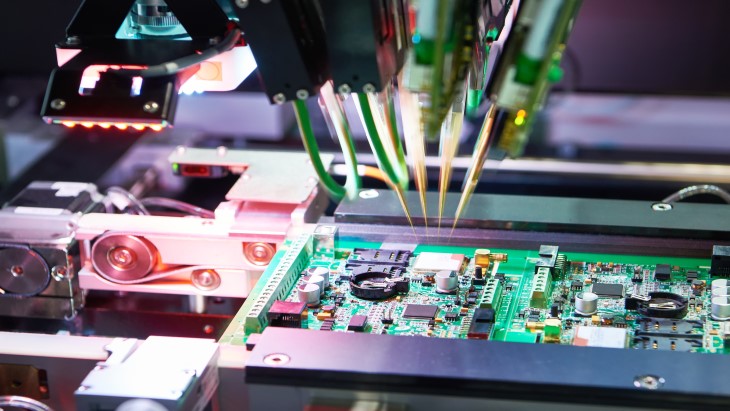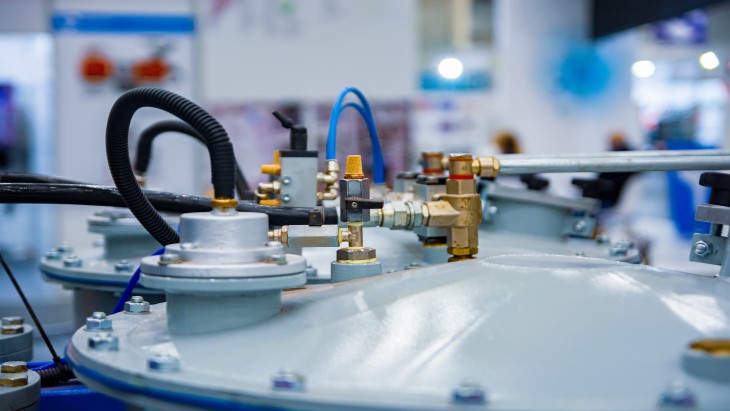Navigating the Challenges of Electronics Encapsulation
Electronics encapsulation is a pivotal process in the safeguarding of electronic components to ensure their longevity, functionality and their protection from the environment. However, manufacturing encapsulated electronics components can come with a number of challenges, including material variability and electronic vulnerability. Furthermore, striking a balance between quality and cost, while simultaneously addressing location-to-location process inconsistencies, presents its own set of difficulties.
In our previous article, we discussed the essentials of manufacturing encapsulated electronics by identifying the importance of encapsulation, introducing prevalent materials used for encapsulation, and detailing a couple common closed mold encapsulation processes.
In this article, we navigate the material and process challenges of electronics encapsulation, as well as provide strategies and solutions to overcome those challenges.

The Market for Plastics in the Electronics Sector
To put into perspective the scale of the market for the plastics encapsulation of electronic components, the global plastics in electronics components market is forecast to grow at a CAGR of 5.5% from 2022 to 2027. More specifically, while the estimated market value in 2022 was USD 7.9 billion, it is expected to reach USD 10.3 billion by 2027.
With the industry’s magnitude, it is critical to explore the challenges that encumber electronics encapsulation processes and the solutions that can help combat them.
A Summary of the Essentials
Before introducing the challenges central to this article, this section briefly summarizes the essentials of electronics encapsulation, which you can read more about in our previous article ‘The Essentials of Electronics Encapsulation’.
Electronics components are encapsulated to protect them against environmental conditions like contamination, moisture, and harsh chemical, to insulate them, to manage their thermal properties, to increase their service lives, and to comply with industry standards.
Three common materials used to encapsulate electronics components are silicones, epoxy resins, and polyurethanes. Additionally, a couple of processes that manufacturers use to protect electronic components are injection molding, over molding, and transfer molding.
Challenges of Electronics Encapsulation
As previously mentioned, processes that encapsulate electronics can encounter several challenges. Batch-to-batch material differences and in-process material behavior deviations can lead to quality fluctuations, defective parts, and increased scrap rates. Additionally, the lack of transparency in closed mold processes creates a manufacturing ‘black box’ that prevents manufacturers from knowing whether a component has been properly and reliably encapsulated, or if the electronic component has been damaged during molding, until post-process quality assurance testing.
Moreover, the plastics encapsulation of electronics relies on specialized polymers that can prove to be very costly, especially when processes are producing defective or unreliable final parts. Another challenge is the variation or deviation between processes occurring in different manufacturing locations.
Fortunately, there are certain strategies and solutions in place that can aid manufacturers in combatting or avoiding these challenges altogether. sensXPERT Digital Mold is a solution that combines several hardware and software features to enable real-time process control, quality assurance (QA), and stability, as well as in-mold transparency and remote process tracking.
You can learn more about sensXPERT Digital Mold here.

Material Variability
Material variability can arise from a number of factors, including batch-to-batch differences, process deviations, and environmental conditions. Inconsistent material properties, such as viscosity, thermal conductivity, and curing behavior can lead to defects and performance issues in encapsulated electronics components.
Additionally, in-mold process deviations can occur due to temperature fluctuations, pressure changes, and time-dependent reactions, which can result in fluctuations in material behavior, defects, and the inadequate protection of electronic components.
In-mold quality control and material characterization are two ways of tackling the issue of material variability within closed mold electronic encapsulation processes. Real-time monitoring sensors, such as sensXPERT’s material characterization sensors, monitor material behavior during processing and can detect many potential deviations in real-time.
Material characterization allows for an in-depth analysis of material properties in an ongoing process, which enables manufacturers to adapt their processes should material behavior and properties deviate from the norm. In this way, a solution like sensXPERT enables quality control to take place directly within a mold, rather than relying on post-process QA testing to detect defects or performance issues in the encapsulated part.
Electronic Vulnerability
Electronic components are vulnerable to external threats like moisture, mechanical stress, and environmental factors. Moisture can infiltrate electronic components, thus causing short circuits and corrosion. This vulnerability is especially pertinent in outdoor or humid environments. At the same time, temperature fluctuations, radiation exposure, and chemical contaminants can lead to performance degradation or failure.
In a manufacturing environment, electronic components can be subject to mechanical stress through their assembly, processing, or encapsulation, which would potentially lead to physical damage or misalignment.
Therefore, it is crucial to ensure the adequate and reliable encapsulation of electronic components through a combination of material characterization, process monitoring, and predictive algorithms.
sensXPERT Digital Mold is a solution that monitors processes and makes them transparent, but, at the same time, the solution predicts the outcome of the process. sensXPERT does this through predictive algorithms that utilize machine learning to forecast the optimal point to demold a final part. Additionally, this solution can help identify ‘harmful’ cycles to prevent damaging the electronic components, or to determine that a specific part might need additional quality assurance scrutiny.
The Digital Mold also ensures that the encapsulated part will be cured or vulcanized enough to provide optimum protection of the electronic component.
High Material Costs
As previously mentioned, the high-performance, specialized polymers required in the encapsulation of electronic components can be costly. This challenge is proliferated by the need for consistent quality and reliability.
Process efficiency is one way of managing high material costs without compromising quality. Optimizing workflows is a method of improving process efficiency and can help minimize material waste and reduce processing time.
Additionally, sensXPERT’s solution can help cut down cycle times with its predictive capabilities, thus making a process more efficient to minimize production costs. The solution’s ability to monitor material behavior and forecast process outcomes also greatly reduces final part defects and the scrapping of costly materials, all while preserving or improving quality.
Location-to-Location Inconsistencies
Manufacturing locations in diverse geographic areas can exhibit variations in their environmental and seasonal conditions, such as temperature, humidity, and air quality, which can affect materials in storage prior to processing and their behavior within a mold.
In cases such as these, dynamic process adaptation is a solution that accounts for material behavior deviations and halts the process once a part has reached optimum cure or vulcanization, regardless of a material’s reaction to fluctuating environmental conditions.
Simultaneously, sensXPERT provides remote process tracking through the sensXPERT Digital Cloud service. Therefore, manufacturers can monitor their processes across all locations and visualize the outcomes to verify that all processes are resulting in the same quality-assured, reliably encapsulated products.
In this article, we discussed several of the challenges that could affect electronic encapsulation processes, along with solutions to tackle them. Material variability, electronic vulnerability, high material costs, and location-to-location inconsistencies can all impact process outcomes and productive manufacturing.
sensXPERT Digital Mold addresses these concerns before they can occur through material behavior characterization, predictive capabilities, in-mold transparency and monitoring, dynamic process control, and remote tracking.
You can read our success story on electronics encapsulation in the automotive industry to find out ‘how global automotive supplier, ZF Friedrichshafen AG, developed a new efficient process’.